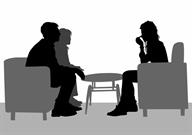Agoraphobia
Agoraphobia is a mental health condition in which a person fears going out in public places where he or she may feel helpless, trapped, or embarrassed in the event of a panic attack. People with this condition have a fear of losing control during a panic attack, and they often start to avoid the situations that they fear or insist on having another person go with them.
Agoraphobia may interfere with normal daily activities and personal relationships. People with severe agoraphobia may become completely homebound and dependent on others for daily tasks, such as grocery shopping and taking care of errands.
Agoraphobia is a type of anxiety. It usually begins before age 35, but it can start in the older adult years. People with agoraphobia are at risk for other anxiety disorders, depression, and substance abuse.
What are the causes?
The cause of this condition is not known. A variety of factors such as fear of sensations and emotions in anxiety (anxiety sensitivity), a family history of anxiety, and stressful events may contribute to this condition.
What increases the risk?
You are more likely to develop this condition if:
What are the signs or symptoms?
Symptoms of this condition include having any of the following for 6 months or longer:
How is this diagnosed?
This condition is diagnosed based on:
Your symptoms. You will be asked questions about your fears and how they have affected you.
Your medical history and your use of medicines, alcohol, or drugs.
Physical exam and lab tests. These are usually done to rule out other problems that may be causing your symptoms.
You may be referred to a mental health specialist (psychiatrist or psychologist).
How is this treated?

This condition is usually treated using a combination of counseling and medicines. These may include:
- Counseling or talk therapy. Talk therapy is provided by mental health specialists. The following forms of talk therapy can be especially helpful:
Cognitive behavioral therapy (CBT). CBT helps you recognize and change unrealistic thoughts and beliefs that contribute to your fears. You will learn that body changes associated with anxiety, such as increased heart rate and breathing, are completely normal and expected.
- Exposure therapy. This type of therapy helps you face and overcome your fears in a relaxed state and in a safe environment. Exposures are usually approached in a systematic way, starting with situations that provoke less fear and building up to situations that provoke more intense fear. Exposure therapy includes:
Imagined exposure. You will imagine fearful situations and expose yourself to them in your mind.
In vivo exposure. You will face your fears in the real world, such as by standing in a crowded place for a few minutes.
Interoceptive exposure. In a safe environment, you will practice experiencing body changes that are associated with panic attacks. One example is breathing through a straw to experience breathlessness.
- Medicines. The following types of medicines may be helpful:
Follow these instructions at home:
Lifestyle
-
Try to exercise. Get 150 minutes or more of physical activity each week. Also, aim to do strengthening exercises two or more times a week.
-
Eat a healthy diet that includes plenty of vegetables, fruits, whole grains, low-fat dairy products, and lean protein. Do not eat a lot of foods that are high in solid fats, added sugars, or salt (sodium).
-
Get the right amount and quality of sleep. Most adults need 7–9 hours of sleep each night.
-
Do not drink alcohol.
-
Do not use illegal drugs or recreational drugs.
General instructions
-
Anxiety & Depression Association of America (ADAA):
www.adaa.org
Contact a health care provider if:
Get help right away if you feel like you may hurt yourself or others, or have thoughts about taking your own life. Go to your nearest emergency room or:
These symptoms may be an emergency. Get help right away. Call 911.
Summary
-
Agoraphobia is a type of anxiety disorder that causes a person to avoid situations that he or she fears, such as being in public or being in crowded spaces.
-
People with agoraphobia often have panic attacks. They may avoid situations in which they feel escape is difficult or panic attacks are likely to occur.
-
Agoraphobia is treated with medicines or cognitive behavioral therapy (CBT).
This information is not intended to replace advice given to you by your health care provider. Make sure you discuss any questions you have with your health care provider.
 This condition is usually treated using a combination of counseling and medicines. These may include:
This condition is usually treated using a combination of counseling and medicines. These may include: